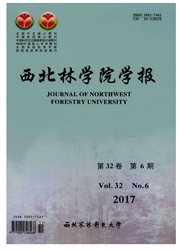

 中文摘要:
中文摘要:
大兴安岭林区是我国北方唯一现存的寒温带针叶林,在维持区域生态平衡和碳循环方面起着重要的作用。林火干扰是大兴安岭森林生态系统的常见的干扰因子之一,火后的恢复过程中森林的碳密度变化是衡量森林恢复的一个重要指标。以大兴安岭呼中林区为例,对2000-2012年的火烧迹地进行调查,采用异速生长方程计算等到乔木层碳密度,采用收获法和实验室烘干分析灌木层和草本层的碳密度。结果表明,林火干扰显著降低了森林乔木层和灌木层的碳密度,随着火后恢复时间的增加,森林乔木层和灌木层的碳密度逐渐增加;草本层碳密度呈现相反趋势,火后明显增加了草本层的碳密度,尤其是在火后初期增加尤为明显。火后恢复过程中碳密度的变化可以为林火管理和森林可持续经营提供科学的指导。
 英文摘要:
英文摘要:
The forest region of the Great Xing'anling Mountains is the only place in which the cool temperate coniferous forest exists in China, which plays an important role in regional ecological balance and carbon cycling. Fire is one of the prevalent disturbance agents in the ecosystem of the region. The change in forest carbon density is one important indicator for characterizing forest recovery processes after fire disturbance. Taking Huzhong forest region of the Great Xing'anling Mountains as the study area,we conducted a filed investigation in the burned areas of the forests which had been burned by wild land fire in the time periods of 2000--2012. The carbon density of the tree layer was calculated by using allometric-equations. The car- bon density of shrub and herbaceous layers was obtained through biomass harvesting method. The results showed that fires significantly decreased the carbon density of the tree and shrub layers. The carbon density of the tree and herbaceous layers increased gradually along forest recovery. The herbaceous layer showed an opposite trend in responding to fire disturbance compared with tree and shrub layers. Fire disturbance increased the carbon density of herbaceous layer, especially in the initial stage of forest recovery. This research would provide a theoretical guide for fire and forest management.
 同期刊论文项目
同期刊论文项目
 同项目期刊论文
同项目期刊论文
 Relative effects of climatic and local factors on fireoccurrence in boreal forest landscapes of nort
Relative effects of climatic and local factors on fireoccurrence in boreal forest landscapes of nort 期刊信息
期刊信息
